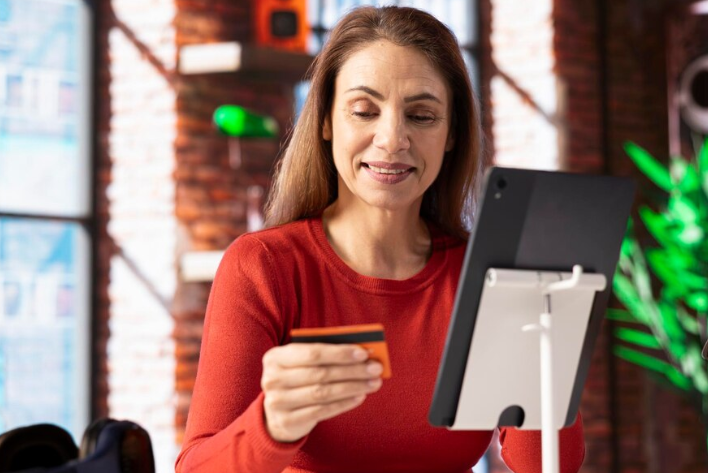In recent years, digital wallets have gained significant traction in Canada, transforming the way consumers make payments. These digital tools allow users to store their credit card information and other payment methods on their smartphones or devices, facilitating quick, secure, and contactless transactions. As more Canadians embrace the convenience of digital wallets, it’s essential to understand how they impact credit card usage and what this means for both consumers and financial institutions.
In this article, we’ll explore the rise of digital wallets in Canada, how they work, their benefits, and what it means for Canadian credit card users.
1. What Are Digital Wallets?
A digital wallet is a mobile app or online service that securely stores credit and debit card information, as well as other financial information like loyalty cards, gift cards, and even digital currencies. With a digital wallet, users can make payments quickly and securely using their smartphones, tablets, or smartwatches, often without the need to physically swipe a card or carry cash.
Some of the most popular digital wallet platforms in Canada include:
- Apple Pay: A widely used wallet for Apple devices that supports credit cards, debit cards, and prepaid cards.
- Google Pay: Available on Android devices, Google Pay allows users to store their cards and make secure payments.
- Samsung Pay: A similar platform for Samsung devices, allowing users to store credit and debit card information for easy payments.
- PayPal: While PayPal is traditionally an online payment platform, it also functions as a digital wallet, enabling users to make in-person purchases and store credit card information.
2. How Digital Wallets Work in Canada
Digital wallets use a technology called Near Field Communication (NFC) to facilitate contactless payments. When a consumer taps their phone, tablet, or smartwatch near a payment terminal, the NFC-enabled device communicates wirelessly with the terminal to process the payment.
Here’s how the process works:
- Add Your Credit Card: Users add their credit card information to their digital wallet through the associated mobile app. This is typically done by scanning the credit card or entering the details manually.
- Authentication: For added security, most digital wallets require users to authenticate their identity using a fingerprint, facial recognition, or a password before making payments.
- Payment: Once authenticated, users can simply tap their smartphone or smartwatch near the payment terminal to complete the transaction. No physical card is required, and users don’t need to share their card details with the merchant.
Digital wallets can also support online payments, allowing users to purchase goods and services from websites and apps that accept digital wallet options.
3. The Benefits of Digital Wallets for Canadian Credit Card Users
The rise of digital wallets brings numerous advantages for Canadian credit card users, making it easier and more convenient to manage payments. Let’s explore some of the key benefits.
1. Convenience and Speed
Digital wallets streamline the payment process, reducing the time spent searching for a physical card or entering card details for online purchases. A simple tap or click is all it takes to complete a payment, making transactions faster and more convenient.
- Contactless Payments: With the ongoing trend toward contactless payment systems, digital wallets allow users to make secure payments with just a tap of their device, reducing the need for physical interaction with payment terminals.
2. Enhanced Security and Privacy
Digital wallets offer several security features that make them safer than traditional credit card payments. Here are a few security advantages:
- Tokenization: When you make a payment using a digital wallet, your actual credit card number is not transmitted to the merchant. Instead, a unique token is generated to complete the transaction, which helps protect your card details from potential fraud.
- Authentication: Digital wallets require users to authenticate their identity using biometric data (like fingerprint recognition or facial scanning) or a secure PIN before making payments. This adds an extra layer of security compared to simply swiping or entering a PIN on a physical card.
- Lost Device Protection: If your smartphone or wearable device is lost or stolen, most digital wallets have a remote wipe feature that allows you to disable the wallet and protect your stored card information.
3. Integration with Loyalty and Rewards Programs
Many digital wallets allow users to store and manage loyalty cards, gift cards, and rewards points alongside their credit cards. This means you can easily earn and redeem rewards without carrying multiple physical cards. For example:
- Airline Loyalty Programs: If your credit card is linked to a frequent flyer program (such as Aeroplan or Air Miles), you can track your rewards directly within the digital wallet.
- Store Loyalty Cards: Store your store-specific loyalty cards, like Shoppers Optimum or PC Optimum, in your digital wallet for easy access.
This integration provides a seamless experience and ensures you don’t miss out on earning points or discounts.
4. Better Budgeting and Tracking
Digital wallets often come with built-in tools to track your spending, giving you a clearer view of your financial habits. Many digital wallets categorize your purchases and display your transaction history in an easy-to-read format, helping you manage your finances better.
- Transaction Alerts: Most digital wallet apps send notifications about purchases made through the wallet, giving you real-time insight into your spending.
- Spending Reports: Some digital wallet apps offer monthly or weekly spending summaries, making it easier to track and manage your budget.
5. Contactless and Hygienic Payments
The COVID-19 pandemic has accelerated the adoption of contactless payments, as people seek ways to limit physical interactions. Digital wallets provide a hygienic alternative to using physical credit cards, as they allow consumers to complete transactions without touching payment terminals or handling cash.
4. What Does This Mean for Canadian Credit Card Users?
1. Increased Adoption of Digital Payments
As digital wallets become more popular, credit card users in Canada are increasingly turning to their smartphones and wearables for everyday transactions. Financial institutions and merchants alike are investing in technology to ensure they can accommodate this shift, and many Canadians are benefiting from more seamless, secure, and efficient payment experiences.
2. A New Level of Convenience
For credit card users, the rise of digital wallets offers an unprecedented level of convenience. No more carrying around multiple cards or rummaging through your wallet for the right one. Whether you’re paying for a coffee, booking a flight, or shopping online, a digital wallet offers an easy and secure way to make payments.
3. More Options for Payment Methods
In addition to credit cards, digital wallets also support debit cards, prepaid cards, and digital currencies, offering consumers more ways to manage their finances in a single app. This flexibility means that users are no longer limited to a single type of payment method and can tailor their digital wallet usage to suit their needs.
4. Shifting Loyalty and Reward Structures
As digital wallets increasingly support loyalty and rewards programs, credit card users may notice a shift in how they earn and redeem points. With digital wallets enabling the storage and easy redemption of loyalty cards and rewards, consumers will have a more integrated and rewarding experience.
5. Challenges and Considerations
While digital wallets offer many benefits, there are some challenges and considerations to keep in mind:
- Device Compatibility: Not all devices or merchants support digital wallet payments. Some older terminals may not accept contactless payments, limiting the wallet’s usefulness.
- Battery Life: If your smartphone or wearable device runs out of battery, you may not be able to make payments using your digital wallet, so it’s important to keep your device charged.
- Security Risks: While digital wallets provide enhanced security features, they are not entirely foolproof. If your phone is lost or stolen, it’s essential to have measures in place (like remote wiping) to secure your financial information.
6. Conclusion
The rise of digital wallets is changing the way Canadian credit card users make payments, offering greater convenience, enhanced security, and more integrated rewards programs. As Canadians continue to embrace these mobile payment technologies, digital wallets are poised to become an essential tool for managing finances, streamlining purchases, and improving overall consumer experience.
For credit card users, digital wallets provide an easier and safer way to make purchases, earn rewards, and manage spending. However, it’s important to remain mindful of potential security risks and ensure that your devices are protected and up to date. By doing so, you can take full advantage of the benefits digital wallets have to offer.


